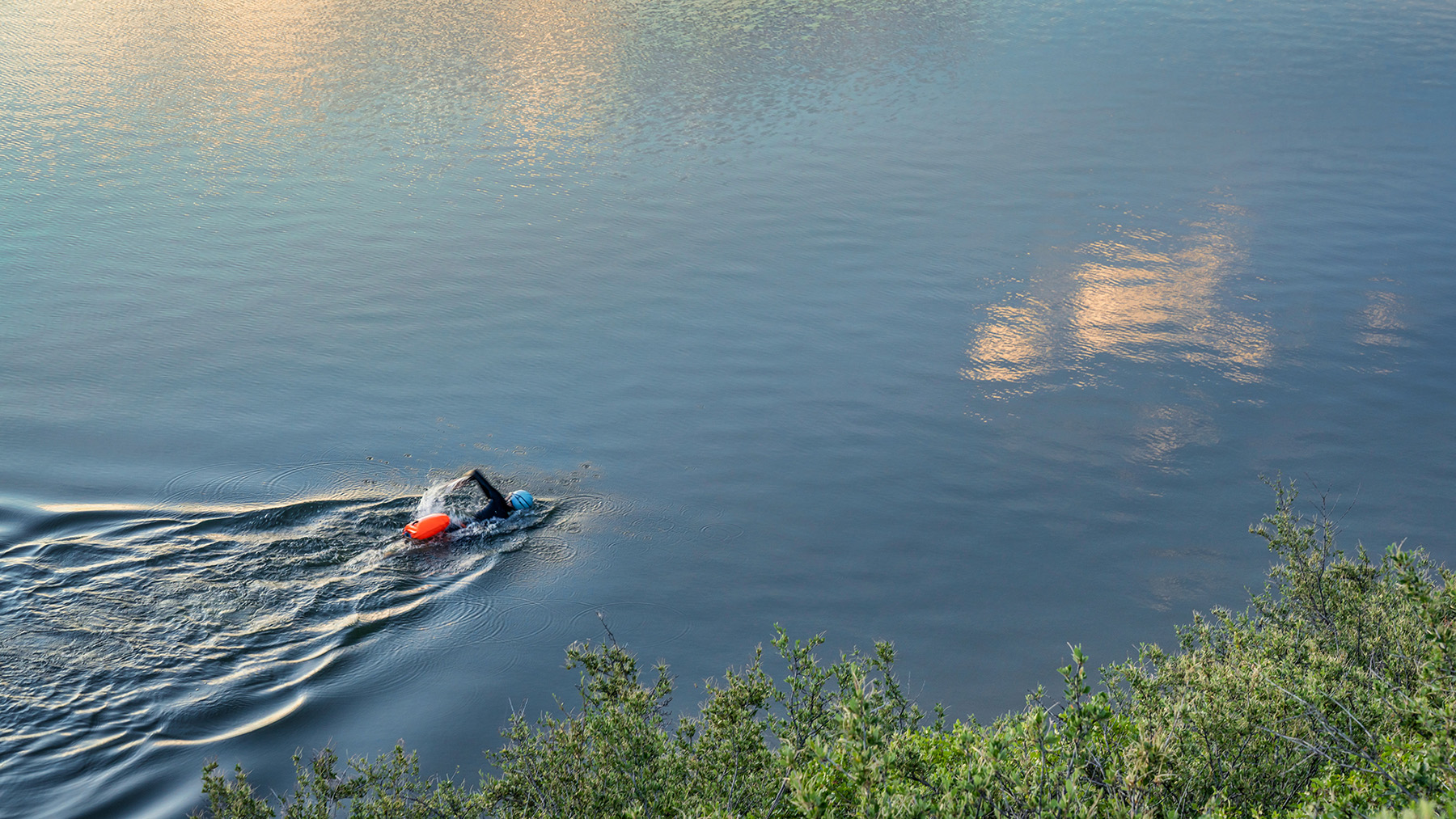Swimming in the Open Water
1. Visibility and staying alert
Swimming anywhere that isn’t a swimming pool would most likely be considered open water swimming. Lakes, rivers, seas and Lochs are all places you may end up swimming.
When swimming in the open water, you have a lot more to contend with than in the pool. Whilst you don’t need to keep any lane discipline or worry about chemicals in the water, there’s a lot else going on.
Plants, fish, currents and other water users all present genuine dangers to open water swimming.
Making sure you are visible to other users is paramount. Having a safety tow float will keep you seen and gives you a place to rest if you need it.
2. Breathing
When swimming in open water, you won’t get as much chance for a breather as you do in the pool. Be prepared for this additional fatigue when planning your route.
Due to currents, a mile in the ocean will be so different to a mile in the pool.
You’ll likely need to be able to breathe from both sides of your body when swimming in the open water. With waves, winds and swells chopping up the water, favouring one side might make your life a lot more challenging.
3. Sighting
You’ll also need to master the skill of sighting - picking a point and heading in that direction. In a pool, you have your lane markers guiding you. There’s no such thing when open water swimming. You pick a prominent spot and aim for it. The head lift you make to check you are heading in the right direction wants to be as small as possible. That way, you won’t ruin your technique and swallow a load of water!
4. Staying warm
Wetsuits make a lot of difference too. You’ll be more buoyant and floating across the top of the water. That will feel great, but you want to get used to it. Make sure that the wetsuit fits well so you can move your arms in it.
Stay safe when swimming in the open water, and have fun. It might be a little scary the first time you do it. Get some support and go for it.




